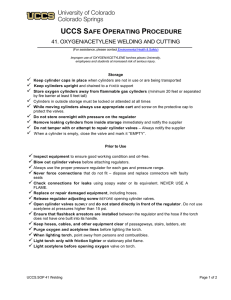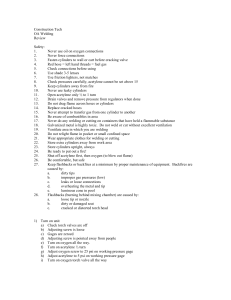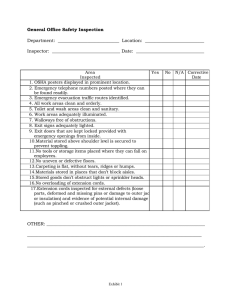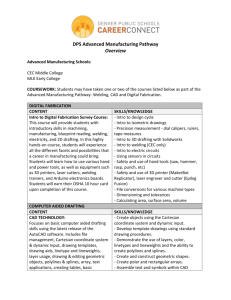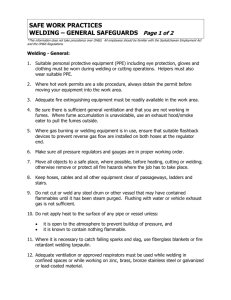AWS Safety and Health of Welders
advertisement
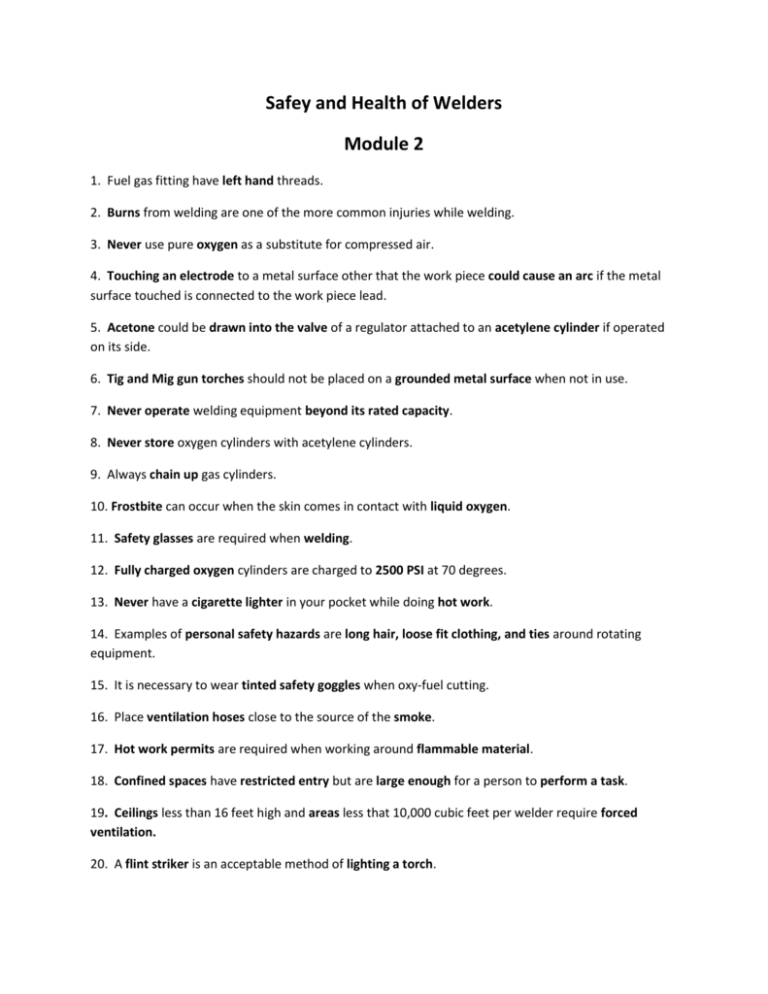
Safey and Health of Welders Module 2 1. Fuel gas fitting have left hand threads. 2. Burns from welding are one of the more common injuries while welding. 3. Never use pure oxygen as a substitute for compressed air. 4. Touching an electrode to a metal surface other that the work piece could cause an arc if the metal surface touched is connected to the work piece lead. 5. Acetone could be drawn into the valve of a regulator attached to an acetylene cylinder if operated on its side. 6. Tig and Mig gun torches should not be placed on a grounded metal surface when not in use. 7. Never operate welding equipment beyond its rated capacity. 8. Never store oxygen cylinders with acetylene cylinders. 9. Always chain up gas cylinders. 10. Frostbite can occur when the skin comes in contact with liquid oxygen. 11. Safety glasses are required when welding. 12. Fully charged oxygen cylinders are charged to 2500 PSI at 70 degrees. 13. Never have a cigarette lighter in your pocket while doing hot work. 14. Examples of personal safety hazards are long hair, loose fit clothing, and ties around rotating equipment. 15. It is necessary to wear tinted safety goggles when oxy-fuel cutting. 16. Place ventilation hoses close to the source of the smoke. 17. Hot work permits are required when working around flammable material. 18. Confined spaces have restricted entry but are large enough for a person to perform a task. 19. Ceilings less than 16 feet high and areas less that 10,000 cubic feet per welder require forced ventilation. 20. A flint striker is an acceptable method of lighting a torch. 21. Material Safey Data Sheets (MSDS) are required by Federal regulation for hazardous materials. 22. The amount of current being used determines the shade filter lens. 23. Second degree burns causes the skin to blister. 24. Don’t weld on wet damp floors. 25. Do not cut directly against concrete. 26. Never oil gas fittings. 27. Always wear safety glasses in a welding area. 28. A burn to the eyes is called a flash burn. 29. Red is the typical color used for fuel gas hoses. 30. Zinc, cadmium, lead, chromium and beryllium when vaporized are hazardous metals. 31. 15 PSI is the maximum safe working pressure for Acetylene. 32. OSHA is the federal organization that insures the sanitary and safe working conditions for workers. 33. Electrical fires require type C fire extinguishers. 34. Always point at the base of a fire when using a fire extinguisher. 35. Radiation, fumes and toxic gases are all potential hazards related to arc welding.




